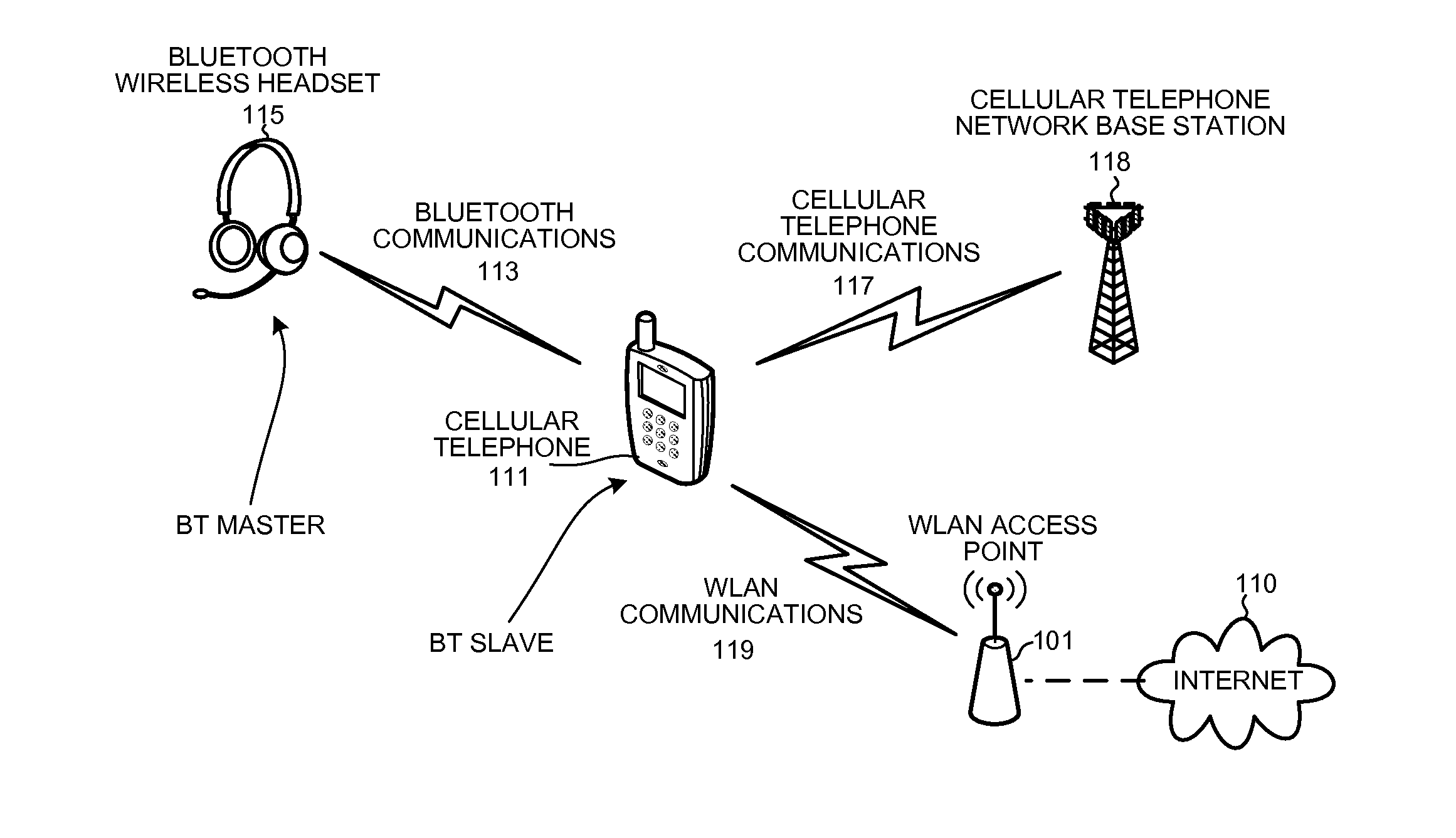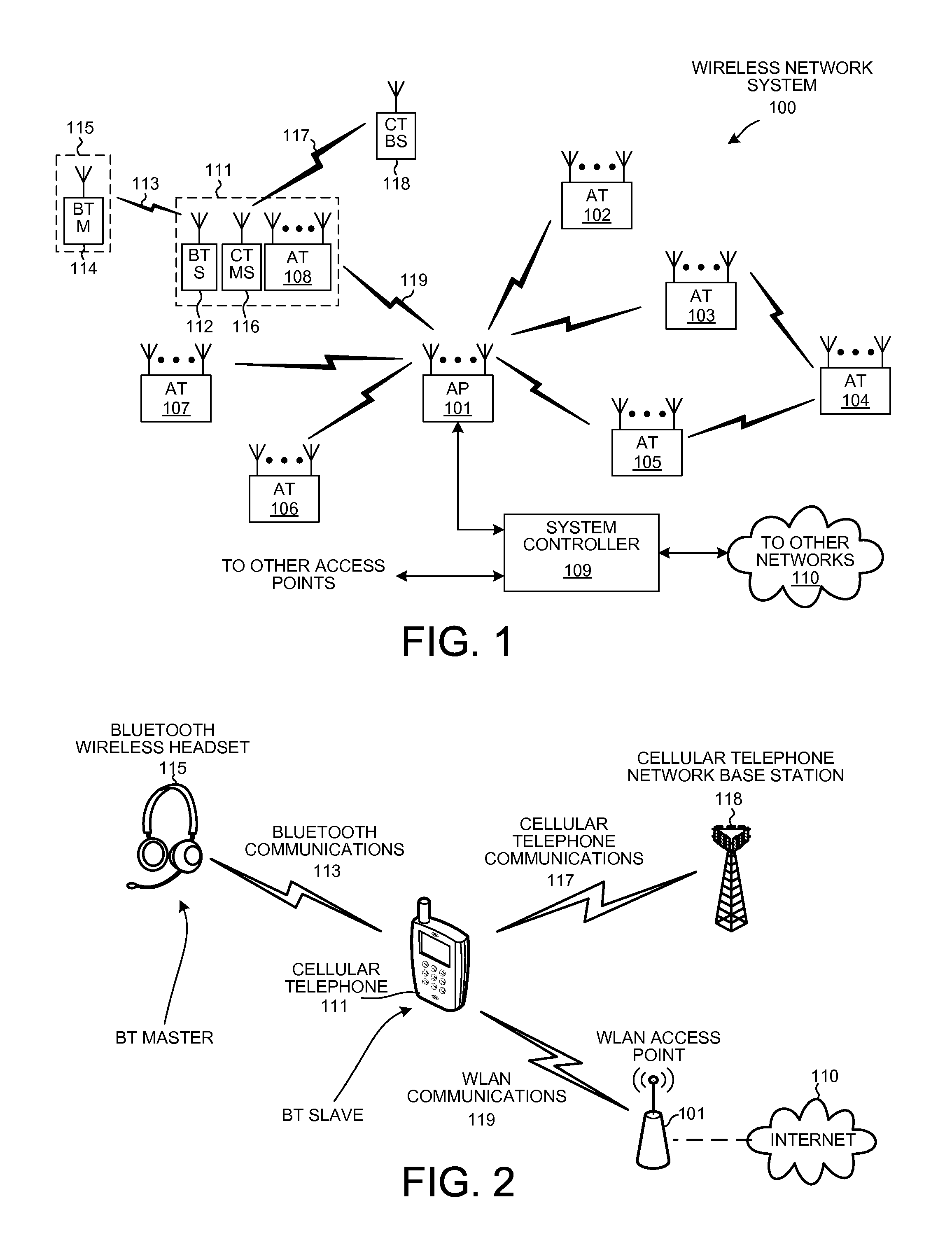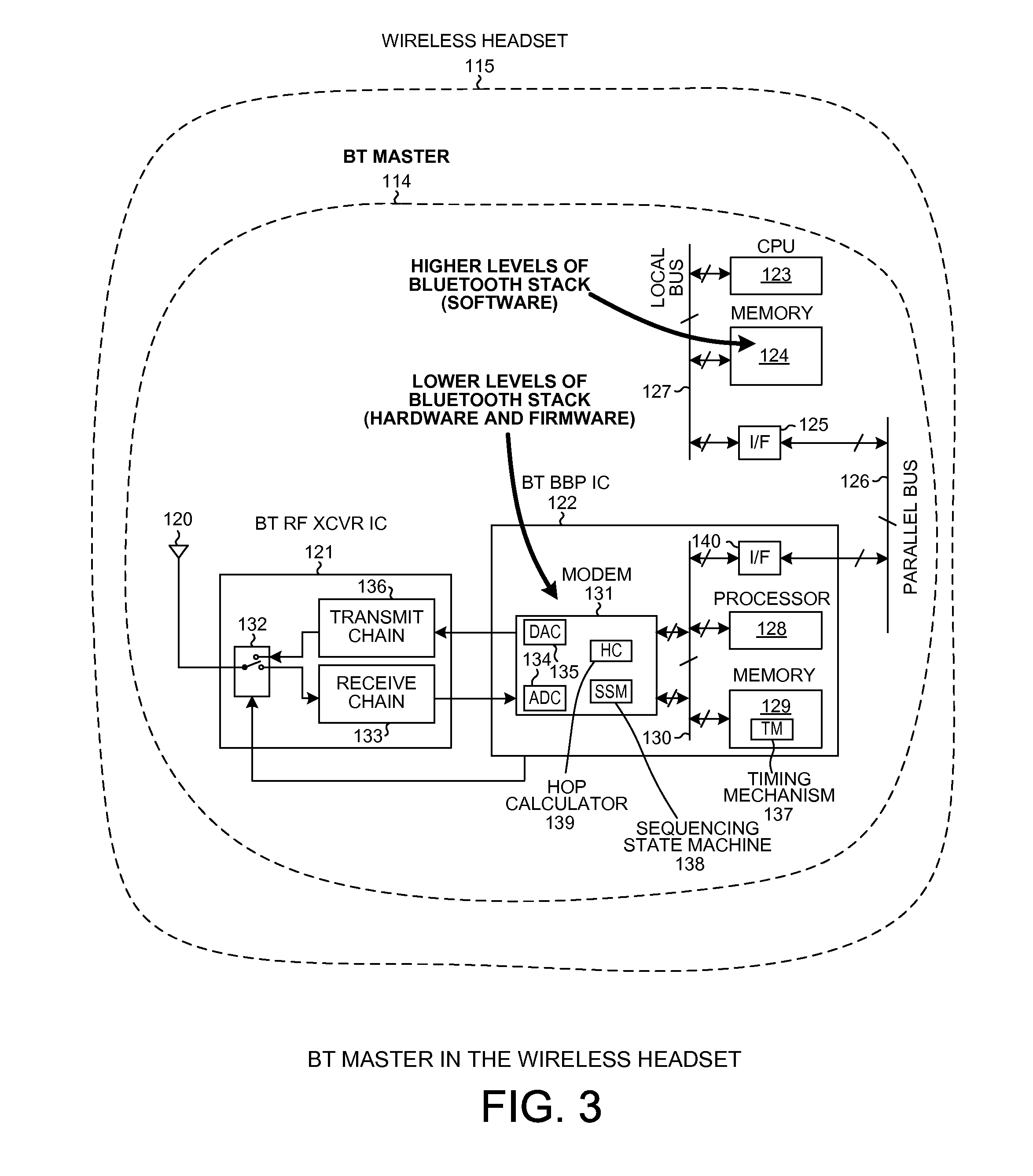Detecting a WLAN signal using a bluetooth receiver during bluetooth scan activity
a bluetooth receiver and wlan technology, applied in the field of waking up a wlan radio, can solve the problems of unpowered or otherwise disabled bt receiver rf front end, inability to receive rf signals,
- Summary
- Abstract
- Description
- Claims
- Application Information
AI Technical Summary
Benefits of technology
Problems solved by technology
Method used
Image
Examples
Embodiment Construction
f conventional scheduling of BT scan intervals is employed.
[0026]FIG. 9 is a table that illustrates how a BT scan window is guaranteed to overlap a WLAN beacon transmission in one particular example if the durations of the BT scan intervals are varied in accordance with one novel aspect.
[0027]FIG. 10 is a flowchart of a method of operating the BT S 112 of the system of FIG. 1 such that WLAN energy detector circuit 195 attempts to detect WLAN energy during BT scan windows.
[0028]FIG. 11 is a flowchart of steps that are performed in one BT page scan window in the method of FIG. 10.
[0029]FIG. 12 is a flowchart of steps that are performed in one of the steps of the method of FIG. 10 to dither the durations of BT scan intervals.
[0030]FIG. 13 is a circuit diagram of an analog implementation of the WLAN energy detector circuit 195 of FIG. 4.
[0031]FIG. 14 is a flowchart of a method of varying the durations of BT scan intervals in accordance with one novel aspect.
DETAILED DESCRIPTION
[0032]Sys...
PUM
 Login to View More
Login to View More Abstract
Description
Claims
Application Information
 Login to View More
Login to View More - R&D
- Intellectual Property
- Life Sciences
- Materials
- Tech Scout
- Unparalleled Data Quality
- Higher Quality Content
- 60% Fewer Hallucinations
Browse by: Latest US Patents, China's latest patents, Technical Efficacy Thesaurus, Application Domain, Technology Topic, Popular Technical Reports.
© 2025 PatSnap. All rights reserved.Legal|Privacy policy|Modern Slavery Act Transparency Statement|Sitemap|About US| Contact US: help@patsnap.com



